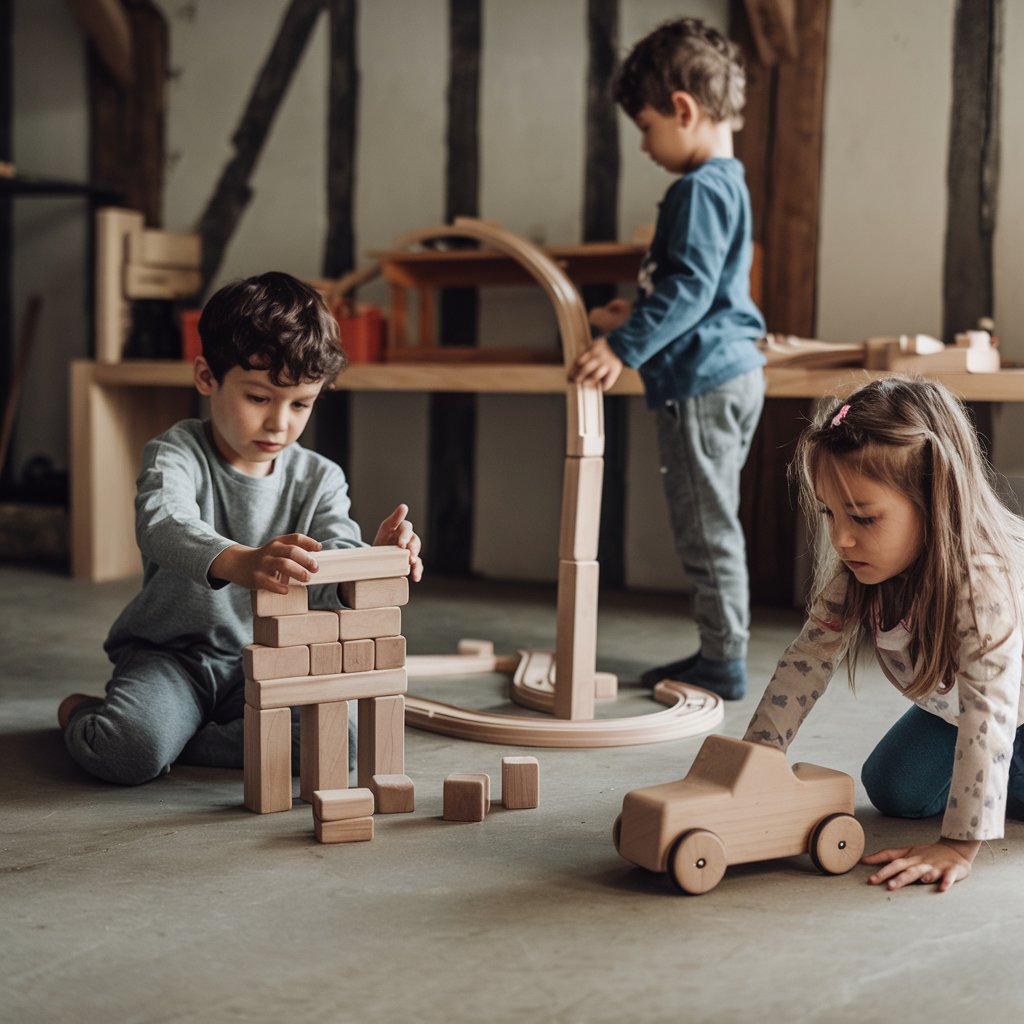Wooden toys are more than simple playthings; they play a vital role in developing children’s language skills. By offering a play experience rich in stimuli, these toys help children expand their vocabulary, improve communication, and build confidence to express themselves. Below, we explore some types of wooden toys that encourage language development in a fun and educational way.

1. Letter and Number Blocks
Wooden blocks with letters and numbers are an effective introduction to the world of words and math. These toys encourage children to recognize letters and numbers, helping them build simple words and identify sounds. As they stack and arrange blocks, children start associating symbols with sounds, which is fundamental for literacy.
2. Wooden Puppets
Wooden puppets provide a unique experience for children to express their thoughts and create stories. By manipulating puppets, children assume different characters and voices, practicing pronunciation and learning to structure dialogues. This practice builds confidence and empathy as they explore different perspectives and emotions.
3. Story Puzzles
Wooden puzzles that depict everyday scenes or stories allow children to become familiar with the logical sequence of events. These toys help build narrative skills, as children can create small stories with each completed piece. By recounting the sequence of events, they practice descriptive abilities and enrich their vocabulary.
4. Career-Themed Figure Sets
Toys representing professions, such as doctors, firefighters, and teachers, help children learn new words related to different fields. Playing with these figures allows them to simulate dialogues and specific situations, gaining technical vocabulary and practicing speech in a pretend-play context.
5. Fairy Tale Characters
Wooden figures inspired by fairy tales and classic characters offer children the opportunity to recreate familiar stories or invent new ones. By taking on these characters’ roles, children practice speaking and develop the ability to construct narratives while exploring themes like friendship, courage, and empathy.
6. Miniature Scenery and Environments
Miniature environments, such as dollhouses and farms, are perfect for helping children simulate daily life, creating dialogues and interactions. These play settings encourage children to narrate their activities and express ideas naturally, enriching their vocabulary and verbal fluency.
7. Storytelling Audio Boxes
Some wooden toys include audio boxes that play stories or songs, encouraging children to follow along or sing. As they listen to new words and feel motivated to repeat them, they gain fluency and expand their linguistic repertoire.
Conclusion
Wooden toys that support language development are valuable tools for children’s learning and enjoyment. Through blocks, puppets, characters, and other types of toys, children find a natural and engaging way to practice their verbal skills. These toys not only entertain but also foster language growth, opening doors to communication and personal expression.
